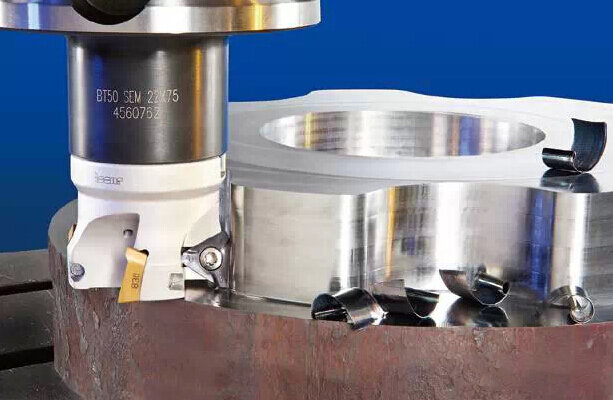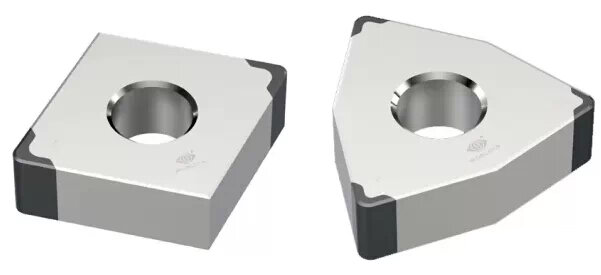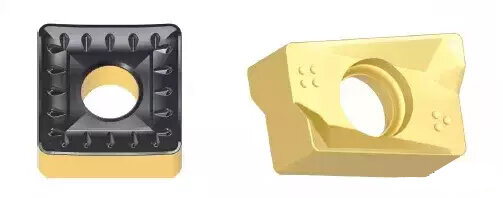15
2025.3
author
138
Reading volume
In recent years, due to great progress in the fields of tool materials, shank structure, and coating technology. CNC tools have achieved rapid development. Some efficient and environmentally friendly CNC cutting technologies such as high-speed cutting and dry cutting are more and more widely used in the field of machinery manufacturing.
CNC machine tools, which represent the highest level of manufacturing technology, have become the mainstream equipment of today's machinery manufacturing industry, and the development of CNC tools has become the vane of the machinery manufacturing industry. Although CNC machine tools integrate new technologies in many fields, the development level of tools has a great impact on the development of CNC technology, it should be said that the development of tool technology has greatly promoted the development of CNC technology, and greatly improved the functional level of CNC machine tools, thus also promoting the development of manufacturing industry as a whole.
Judging from the current situation, multi-functional compound tools and modern high-efficiency tools are the mainstream of tool development. The increasing development of cutting technology, the rapid development of tool materials, and the rapid development of coating technology have greatly promoted the development of tools.
1. The development status of cutting technology
Cutting is one of the most widely used processing methods in the field of machining, high efficiency, high quality, low cost and green environmental protection, which is the ultimate goal pursued by cutting technology. At present, high-speed cutting, dry cutting, hard cutting and compound cutting have become the most important development directions of cutting technology.
1. High-speed cutting - high efficiency
The advent of high-speed cutting tool holder systems such as polycrystalline diamond (PCD) tools and HSK has contributed to the rapid development of high-speed cutting technology. At present, high-speed cutting technology is widely used in industrial fields such as automobiles, aviation, aerospace and building materials for the processing of non-metallic materials and non-ferrous metal materials, which has greatly improved production efficiency while reducing production costs exponentially.

2. Dry cutting - environmental protection
Dry cutting is also an important development direction of current cutting manufacturing technology. In fact, while using dry cutting, the cutting speed must be increased so that the heat energy generated during the cutting process is carried away by the chips. This processing method not only improves production efficiency, but also is very environmentally friendly; In addition, because dry cutting does not use cutting fluid, or only uses a very small amount of cutting fluid, it greatly reduces the production cost of the enterprise and eliminates the subsequent processing of waste cutting fluid and metal chips mixed industrial waste to the greatest extent.
At present, tools coated by physical vapor deposition (PVD) method are widely used in gesture cutting, which obtains thinner coatings, better adhesion, and better thermal insulation, which maximizes heat isolation outside the tool during the cutting process, so that most of the cutting heat is carried away by the chips. At present, dry cutting has been vigorously developed and applied in Germany, and the proportion of dry cutting in the German machinery manufacturing industry can reach more than 20%.
2. The development of CNC tool materials
1. Powder metallurgy high-speed
On the basis of traditional smelting high-speed steel, powder high-speed steel is manufactured by using the hot isostatic pressing process, which is generally atomized into fine powder with high-pressure nitrogen or argon, and then pressed into fine billets under high temperature and pressure, and finally rolled into high-speed steel materials. Its advantage is that the heat treatment deformation is small, especially suitable for the manufacture of precision tools and complex tools.
Compared with ordinary smelting high-speed steel, powder high-speed steel has higher hardness, better toughness, and more wear resistance. Under the same hardness conditions, the strength of powder high-speed steel is increased by 20%~30%, and the toughness is increased by 1.5-2 times. In view of the excellent comprehensive properties of powdered high-speed steel and market demand, it is foreseeable that this type of material will be an important direction for the development of tool materials.

2. Ultra-fine grain cemented carbide
Cemented carbide appeared in the 30s of the last century, mainly carbides and binders of group B metal elements are made through the powder metallurgy process. Cemented carbide has become a mainstream development direction of tool materials, at present, the main types are tungsten cobalt, tungsten cobalt titanium, tungsten titanium tantalum, and now fine grain and ultra-fine grain cemented carbide have been developed, and the particle size of the grain can reach the nano level.
In order to improve the toughness of the material, the cobalt content of ultra-fine grain cemented carbide is often higher than that of general cemented carbide, but because the ultra-fineness of the grain compensates for the hardness loss caused by the high cobalt content, and can also greatly improve the tool life, and the sharpness of the cutting edge is also greatly improved, which can process materials with strong viscosity, so ultra-fine grain cemented carbide is more and more favored by users.
3. Superhard tool material
a. Ceramic knives are one of the most promising knives at present. With the development of CNC machine tools, ceramic tools have innate advantages in achieving pollution-free cutting and hard material cutting. Adding silicon carbide to the aluminum trioxide ceramic matrix can be used to make whisker toughened ceramic materials, or adding metal materials with a content of less than lO% to make metal ceramics, which can greatly improve the toughness of ceramic tools and expand the field of use.
b. The structure of cubic boron nitride is similar to that of diamond, with a hardness of 8 000-9 000 HV. Under high temperature and pressure, cubic boron nitride microparticles are sintered together to make polycrystalline cubic boron nitride. This material can not only process harder materials such as high-speed steel, hardened steel, cast iron, cemented carbide, but also difficult materials such as thermal spraying materials and superalloys.
c. Diamond is the hardest substance among all known natural materials and is widely used in non-ferrous and non-metal processing. In the 70s of the last century, some developed countries have developed polycrystalline diamond knives. Polycrystalline diamond (PCD) composite sheet is a new blank material made of diamond particles with micron size mixed with metal powders such as cobalt and nickel and sintered on tungsten carbide (WC) substrate under high pressure and high temperature. This material not only has various excellent properties of diamond, but also has good toughness and conductivity, so it can be processed by wire EDM machines.

ThreeThe development of CNC tool holders
With the development of high-speed cutting technology of CNC machine tools, the requirements for tool clamping systems have become higher and higher, and the tool holder system that adapts to high-speed cutting has been vigorously developed and developed. At present, the HSK tool holder system developed by the German OTT company is recognized as the clamping system with the best performance.
The HSK tool holder is a typical 1:10 short cone face, taper shank and spindle face contact at the same time. Because the HSK tool holder adopts a dual positioning and cooperation principle, when clamping, under the action of sufficient tensioning force, the hollow taper shank of the HSK tool holder and the spindle cone L, the cone surface and the clamping plane are in contact at the same time, causing friction, providing the radial positioning and plane clamping positioning of the closed structure. Therefore, HSK tool holders have the characteristics of high static and dynamic rigidity, large torque transmission, accurate radial positioning and high tool change repeatability.
FourThe development of CNC tool coating
At present, except for some high-speed tools that do not have coating, the vast majority of all types of tools have a coating structure. Among the current various tool coatings, titanium nitride (TiN) coatings are dominant, and multi-layer coatings constructed with TiN as the base layer and PVD coatings with titanium aluminide nitride (TiAlN) are important development directions.
Physical vapor deposition (PVD) is the process of evaporation, ionization, or sputtering, which produces metal particles and reacts with reactive gases to form compounds deposited on the surface of the workpiece. Compared to chemical vapor deposition (CVD), PVD coatings are thinner and have better adhesion. The PVD coating of titanium nitride aluminide (TiAlN) has higher hardness and better heat resistance due to the oxidation of the coating surface at high temperatures to form an amorphous aluminum trioxide film. In dry cutting, the coating acts like a thermal barrier, which has much lower thermal conductivity than the tool matrix and workpiece material, so the coated tool can absorb less cutting heat and withstand higher cutting temperatures, thereby increasing the cutting speed while ensuring the life of the tool.
Conclusion: Advanced tools are the foundation for promoting the development of CNC cutting technology. The great progress of tool materials, tool structures and tool coating technologies has promoted the development of CNC tools in two directions: generalization and specialization. With the development of productivity and the increase in the application of difficult-to-machine materials, new CNC tools will definitely accompany the rapid development of CNC machine tools and play an increasingly important role in the national economy.
